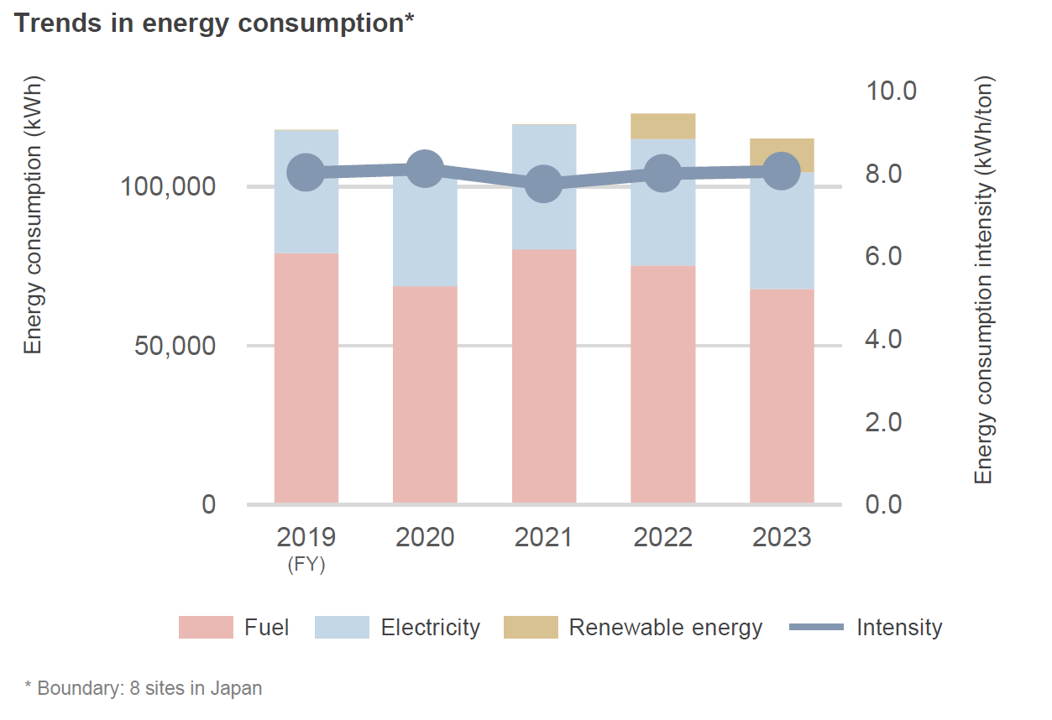Environment
Energy Management
Basic approach
With its roots in “energy conservation” that started with the first oil crisis in 1973, the Mitsuboshi Belting Group’s energy management activities already span half a century. Initially,concern about “oil depletion” was the main driving force, but cost reduction was added as one of the objectives later on. At present, energy management is positioned as an important measure and indicator in responding to climate change.
Recognizing that energy management contributes to global warming mitigation and biodiversity conservation, we will actively work toward achieving these targets through rapid implementation of effective measures.
Management system
The Mitsuboshi Belting Group conducts energy management in accordance with an environmental management system (EMS) that complies with ISO14001. The President and the Director in Charge of Safety and the Environment are responsible for the overall management of the EMS and the appointment of a Person with Overall Environmental Responsibility. The Companywide Environmental Conference, with the Director in Charge of Safety and the Environment as chairperson and the responsible persons of all departments and affiliated companies as members, meets twice a year to determine and disseminate policies, strategies, and targets for each fiscal year to all departments and affiliated companies for implementation. The Conference monitors and evaluates the progress of measures implemented in each department and affiliated company and provides necessary instructions. The Companywide Environmental Conference’s deliberations and decisions are reported to the Board of Directors through the President and the Director in Charge of Safety and the Environment.
On our materiality list, for materiality related to energy management, “improvement of energy consumption intensity” is listed as a measure to reduce CO2 emissions, and a KPI target of “reducing energy consumption intensity by 1% or more compared to the previous fiscal year” is set. Energy management activities are therefore subject to monitoring and evaluation by the Sustainability Promotion Committee.
Targets and implementation status
As mentioned above, our target for energy management for FY2023 was to reduce energy consumption intensity by 1% or more compared to the previous fiscal year. However, actual results fell short of the target with an increase of 0.7% from the previous fiscal year. Looking at the trends in energy consumption intensity over the past five years in the chart below, no noticeable effects have been observed. It appears that effective measures have run their course over the years of activities.
Meanwhile, the renewable energy introduction ratio*, which was only 0.1% in FY2021, increased to 9.1% in FY2023, which means 9.1% of the total energy consumption was replaced by renewable energy.
Since the primary energy equivalent of renewable energy is expected to be smaller than the equivalent of energy derived from fossil fuels, we plan to gradually expand the contribution of renewable energy in the future.






